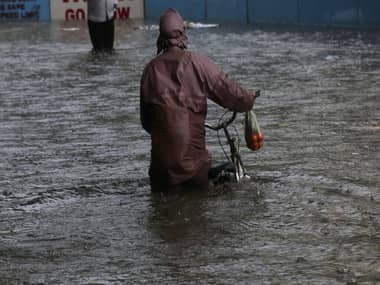The India Meteorological Department (IMD) on Wednesday issued a red alert in Mumbai, Thane and Palghar , following heavy rains in many parts of the city. Earlier, it had sounded an orange alert which was later changed to a red alert. [caption id=“attachment_7284001” align=“alignleft” width=“380”]  IMD issued a red alert in Mumbai, Thane and Palghar. AP[/caption] The IMD issues color-coded alerts along with a district-wise forecast of rainfall on its website, with the objective of alerting people ahead of weather events which are likely to cause damage or disrupt normal life. The four types of color coded alerts are as follows: Red alert: The red alert is sounded when extremely bad weather is expected. It tells people in the affected areas that they need to take action to keep themselves and others safe. In situations where a red alert is sounded, widespread damage, travel and power disruption are likely, along with a risk to life. People must avoid dangerous areas and follow the advice of emergency services and local authorities. Amber or Orange alert: An amber alert is issued when there is an increased possibility of extremely bad weather, which could potentially cause travel delays, road and rail closures, and interrupt power supply. There could also be a risk to life and property. It tells people that they need to be prepared to change plans and protect themselves, their family and community from the impacts of the severe weather predicted by the Met department. Yellow alert: It indicates that the weather may change or worsen in the next few days. It alerts people to the possibility of adverse weather conditions over a period of a few days and tells them to plan ahead keeping in mind possible travel delays and disruption of day-to-day activities. Green alert: The green alert means that there is no possibility of severe weather and people are not required to take any precautionary action.In effect, it means that no advisory is issued. Follow LIVE updates on Mumbai rains here
The IMD issues color-coded alerts along with a district-wise forecast of rainfall with on its website, with the objective of alerting people ahead of weather-events which are likely to cause damage or disrupt normal life
Advertisement
End of Article


)

)
)
)
)
)
)
)
)



